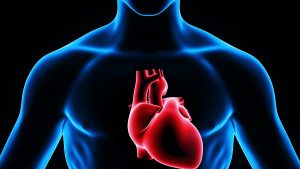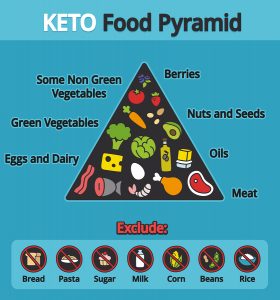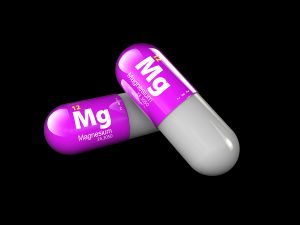Dr. Pamela Smith gave a lecture in December 2016 showing that heart health improves with hormone replacement. Her talk was part of the 24th Annual World Congress on Anti-Aging Medicine (Dec. 9 to Dec. 11, 2016) in Las Vegas, which I attended. The title of the talk was: “Heart health: The Importance of Hormonal Balance for Men and Women”. Her keynote lecture contained 255 slides. I am only presenting a factual summary of the pertinent points here.
1. Estrogen
First of all, estrogens are the main female hormones in women that protects them from heart attacks.
Observations regarding risk of heart attacks
- Women have a lower risk of heart attacks before menopause compared to men of the same age.
- Heart attack rates go up significantly after menopause.
- Estrogen replacement therapy may reduce the risk of heart attacks by 50% for postmenopausal women.
Lipid profile after menopause
There is an elevation of LDL cholesterol, total cholesterol and triglycerides as well as lower HDL cholesterol levels. All of this causes a higher risk of heart attacks for postmenopausal women. Estrogen replacement therapy increases the large VLDL particles, decreases LDL levels and raises HDL-2. Postmenopausal women who do estrogen replacement therapy (ERT) are helping to reduce their heart attack rates.
Difference between oral and transdermal estrogen replacement
The liver metabolizes estrogen taken by mouth. This reduces the protective effect on the cardiovascular system. In contrast, transdermal estrogen (from commercial estrogen patches or from bioidentical estrogen creams) has a higher cardioprotective effect. The liver does not metabolize transdermal estrogen. Dr. Smith explained using many slides how estrogen prevents heart attacks. Apart from lipid lowering effects there are protective effects to the lining of the arteries. In addition there are metabolic processes in heart cells and mitochondria that benefit from estrogens. The end result is that postmenopausal women who replace estrogen will outlive men by about 10 years. The production of Premarin involved pregnant mares. In other words, it is not human estrogen and it does not fit the human estrogen receptors. Also the liver metabolizes estrogen taken as tablet form, which loses a lot of the beneficial effects that you get from transdermal estrogen.
How can you document the beneficial effects of estrogen replacement?
- Carotid intima measurements in postmenopausal women on ERT show a consistent reduction in thickness compared to controls.
- Postmenopausal women on ERT reduce their physical and emotional stress response compared to postmenopausal women without ERT.
- Hormone replacement therapy in postmenopausal women reduces blood pressure. Measurements showed this effect to be due to a reduction of angiotensin converting enzyme (ACE) by 20%. This is the equivalent of treating a woman with an ACE inhibitor without the side effects of these pills.
- Coronary calcification scores were lower in postmenopausal women on ERT than a control group without ERT. These calcification scores correlate with the risk for heart attacks.
- Oral estrogen replacement leads to proinflammatory metabolites from the liver metabolism of estrogen. No proinflammatory metabolites occur in the blood of women using transdermal estrogen. The anti-inflammatory effect of transdermal estrogen is another mechanism that prevents heart attacks.
- Postmenopausal women on ERT had no increased risk of heart attacks or venous thromboembolism (clots in veins). Menopausal women without ERT have a risk of 40% of dying from a heart attack. Their risk of developing breast cancer is 5.5%, the risk of dying from breast cancer is about 1%. There was an increase of venous thromboembolism in women who took oral estrogen.
- Estrogen has antiarrhythmic effects stabilizing the heart rhythm. Dr. Smith said that in the future intravenous estrogen might be used to prevent serious arrhythmias following heart attacks.
Estrogen levels in males
Males require a small amount of estrogens to maintain their memory, for bone maturation and regulation of bone resorption. But they also need small amounts of estrogen for their normal lipid metabolism.
However, if the estrogen levels are too high as is the case in an obese, elderly man, there is an increased risk of heart disease. Factors that lead to increased estrogen levels in an older man are: increased aromatase activity in fatty tissue, overuse of alcohol and a change in liver metabolism, zinc deficiency, ingestion of estrogen-containing foods and environmental estrogens (also called xenoestrogens).
2. Progesterone
Furthermore, progesterone is the second most important female hormone, the importance of which has been neglected in the past. Progesterone is significantly different from the progestin medroxyprogesterone (MPA). MPA was the oral progestin that was responsible for heart attacks and blood clots in the Women’s Health Initiative. MPA increases smooth muscle cell proliferation. This in turn causes hardening of the coronary arteries. In contrast, progesterone inhibits smooth muscle cell proliferation, which prevents heart attacks. Progesterone also lowers blood pressure and elevates HDL cholesterol, but MPA does not.
Progesterone in males
In a small study Depo-Provera was given to males for 17 days. Blood tests showed a lowering of triglycerides, LDL cholesterol and Apo A-1.
3. Testosterone
Finally, testosterone is the third sex hormone that is present in women. In men it is the main hormone, but women benefit from just a small amounts of it for libido, clarity of thought and muscle endurance.
Testosterone replacement in women
Testosterone in women does not only increase their sex drive, but also relaxes the coronary arteries in women who were testosterone deficient. This allows more blood flow to the heart. In postmenopausal women testosterone replacement lowered lipoprotein (a) levels up to 65%. The physician replaces first with bioidentical estrogen; only then does he consider replacing missing testosterone in women. Otherwise testosterone alone can cause heart attacks in women.
Elevated testosterone in women with PCOS
Women with polycystic ovary syndrome (PCOS) can have increased testosterone levels when they go through premenopause or menopause.
Women with PCOS are at a higher risk to develop diabetes, heart disease and high blood pressure. 50% of women with PCOS have insulin resistance. 70% of women with PCOS in the US have lipid abnormalities in their blood.
Elevated testosterone levels in the blood can lower the protective HDL cholesterol and increase homocysteine levels. Both can cause heart attacks.
Women with PCOS have a 4-fold risk of developing high blood pressure.
Testosterone replacement in males
A 2010 study showed that low testosterone levels in males were predictive of higher mortality due to heart attacks and cancer. Low testosterone ca cause high blood pressure, heart failure and increased risk of cardiovascular deaths. There was a higher incidence of deaths from heart attacks when testosterone levels were low compared to men with normal testosterone levels.
Low testosterone can cause diabetes and metabolic syndrome, which in turn can cause heart attacks.
It is important that men with low testosterone get testosterone replacement therapy.
DHT (Dihydrotestosterone)
DHT is much more potent than testosterone. Conversion of testosterone leads to DHT via the enzyme 5-alpha-reductase. While testosterone can be aromatized into estrogen, DHT cannot. Some men have elevated levels of DHT. This leads to a risk of heart attacks, prostate enlargement and hair loss of the scalp.
Andropause treatment
Only about 5% of men in andropause with low testosterone levels receive testosterone replacement in the US. This may be due to rumors that testosterone may cause prostate cancer or liver cancer. The patient or the physician may be reluctant to treat with testosterone. Researchers sh0wed that bioidentical testosterone does not cause any harm. It is safe to use testosterone cream transdermally. It does not cause prostate cancer or benign prostatic hypertrophy.
An increase of 6-nmol/L-serum testosterone was associated with a 19% drop in all-cause mortality.
Testosterone helps build up new blood vessels after a heart attack. Testosterone replacement increases coronary blood flow in patients with coronary artery disease. Another effect of testosterone is the decrease of inflammation. Inflammation is an important component of cardiovascular disease.
Testosterone replacement improves exercise capacity, insulin resistance and muscle performance (including the heart muscle).
Apart from the beneficial effect of testosterone on the heart it is also beneficial for the brain. Testosterone treatment prevents Alzheimer’s disease in older men by preventing beta amyloid precursor protein production.
4. DHEA
The adrenal glands produce the hormone dehydroepiandrosterone (DHEA). It is a precursor for male and female sex hormones, but has actions on its own. It supports muscle strength. Postmenopausal women had a higher mortality from heart disease when their DHEA blood levels were low.
Similar studies in men showed the same results. Congestive heart failure patients of both sexes had more severe disease the lower the DHEA levels were. Other studies have used DHEA supplementation in heart patients, congestive heart failure patients and patients with diabetes to show that clinical symptoms improved.
5. Melatonin
Low levels of melatonin have been demonstrated in patients with heart disease. Melatonin inhibits platelet aggregation and suppresses nighttime sympathetic activity (epinephrine and norepinephrine). Sympathetic activity damages the lining of coronary arteries. Melatonin reduces hypoxia in patients with ischemic stroke or ischemic heart disease. Lower nocturnal melatonin levels are associated with higher adverse effects following a heart attack. Among these are recurrent heart attacks, congestive heart failure or death. Melatonin widens blood vessels, is a free radical scavenger and inhibits oxidation of LDL cholesterol. Melatonin reduces inflammation following a heart attack. This can be measured using the C-reactive protein.
In patients who had angioplasties done for blocked coronary arteries intravenous melatonin decreased CRP, reduced tissue damage, decreased various irregular heart beat patterns and allowed damaged heart tissue to recover.
6. Thyroid hormones
It has been known for more than 100 years that dysfunction of the thyroid leads to heart disease. Hypothyroidism can cause heart attacks, hardening of the coronary arteries and congestive heart failure. Lesser-known connections to hypothyroidism are congestive heart failure, depression, fibromyalgia, ankylosing spondylitis and insulin resistance. Some cases of attention deficit hyperactivity disorder (ADHD) with low thyroid levels may successfully respond to thyroid replacement.
Thyroid hormones improve lipids in the blood, improve arterial stiffness and improve cardiac remodeling following a heart attack. Thyroid hormones help with the repair of the injured heart muscle. They also work directly on the heart muscle helping it to contract more efficiently. Lower thyroid stimulating hormone (TSH) values and higher T3 and T4 thyroid hormone levels lead to improved insulin sensitivity, higher HDL values (= protective cholesterol) and overall better functioning of the lining of the arteries.
Dr. Smith said that thyroid replacement should achieve that
- TSH is below 2.0, but above the lower limit of normal
- Free T3 should be dead center of normal or slightly above
- Free T4 should be dead center of normal or slightly above
Most patients with hypothyroidism require replacement of both T3 and T4 (like with the use of Armour thyroid pills).
7. Cortisol
Cortisol is the only human hormone that increases with age. All other hormones drop off to lower values with age. The adrenal glands manufacture cortisol. With stress cortisol is rising, but when stress is over, it is supposed to come down to normal levels. Many people today are constantly overstressed, so their adrenal glands are often chronically over stimulated. This can lead to a lack of progesterone. It also causes a lack of functional thyroid hormones as they get bound and are less active. When women have decreased estradiol in menopause there is a decline in norepinephrine production, production of serotonin, dopamine and acetylcholine. Women with this experience depression, lack of drive and slower thought processes.
Conclusion
Seven major hormones have been reviewed here that all have a bearing on the risk of developing a heart attack. It is important that these hormones are balanced, so they can work with each other. Hormones can be compared to a team that works together and is responsible for our health. If one or several of the team players are ineffective, our health will suffer. For this reason hormone replacement is crucial.
Hormone effects on heart muscle
Hormones have effects on mitochondria of the heart muscles cells. They stabilize the heart rhythm as in the case of estradiol. But they can also strengthen the heart muscle directly through DHEA and estrogens in women and DHEA and testosterone in men. Thyroid hormones are another supportive force for the heart. Physicians can use them therapeutically in chronic heart failure patients. When people age, their hormone glands will produce less hormones, but blood tests will show this. Replacing hormones that are missing can add years of active life. Taking care of the symphony of hormones means you are taking care of your most important organ, the heart!















